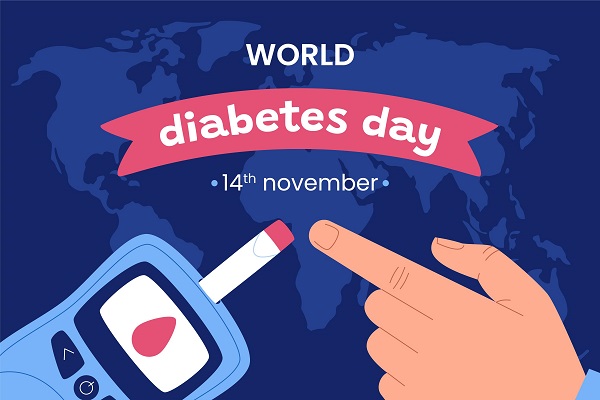Contributed by – Healthians Team
Are you legs restless?
Have you been getting up at night due to an uncomfortable feeling in your legs? During office hours too, if you are seated for a long time, do you experience some cramping, soreness or itching in the calf muscles or the whole leg? Whether it is a relaxing day or during a deep peaceful sleep; do your legs go restless, giving you discomfort? If you identify with these symptoms, then this can be an alarm of Restless Leg Syndrome(RLS). And you are not alone!
Many feel like cutting off the legs, some experience uneasy feelings like creeping, itching, pulling, tugging or needle piercing. Sensations ranging from pain or an aching in the muscles, to “an itch you can’t scratch”, a “buzzing sensation”, an unpleasant “tickle that won’t stop”, or limbs jerking while awake are reported. These sensations begin or intensify during episodes of quiet wakefulness, such as relaxing, watching TV or working on computer, reading, studying, or trying to sleep.
My legs hurt at night, is there something to worry?
If your sleep is disturbed due to discomfort or cramping in the calf muscles, you do not have to worry. Rather you should be looking for solutions to ease your discomfort. You might be suffering from Restless Leg Syndrome also known as Willis-Ekbom Disease.
How do I know if I have this Syndrome?
This is called a syndrome because it involves more than one sign. So, check if you have the maximum of following listed signs:
- Pain in legs after a period of rest
- Mostly occurs during evening
- Relief by moving of legs
- Increases, if you rest again
- Night time leg twitching
How can I get it diagnosed?
There is no laboratory test or investigation to confirm you are having RLS or not. You can chart your episodes of pain and visit your doctor explaining the type and time of pain. The frequency of pain and time is important to differentiate it from other pains.
What types of pain is felt in RLS?
The common expression of a person suffering with RLS is ‘urge to cut the leg off’. This is because of the excruciating uncontrollable pain which happens. The feeling in RLS can broadly be classified as crawling, creeping, pulling, throbbing, aching and itching. Affected people do not generally describe their pain but do express the desire to move their legs.
What causes RLS? Can I prevent it?
There is no specific cause of RLS. But it has been linked to:
- Iron deficiencies
- Chronic diseases like diabetes and kidney failure
- Medical conditions like Parkinson’s disease and peripheral neuropathies
- A family history of Restless Leg Syndrome
- Commonly experienced in the last trimester of pregnancy
- Individuals taking certain medications – such as anti-nausea, anti-seizure, and antipsychotic drugs have higher chances of RLS
Yes, you can prevent it by following an active lifestyle.
When should I consult a doctor?
If after reading this you feel you might be having Restless Leg Syndrome, do consult your doctor. In most cases RLS goes unattended as people do not know much about it.
I feel I have RLS, is it dangerous?
Having RLS is not at all dangerous or life threatening. You should get yourself checked from a doctor to side rule any other ailment.
What can I do if I have RLS?
If you feel you have a restless feeling in your legs, you can start with the following exercises and regimes in your daily living to get comfort.
- Apply ice pack to relax the muscles
- Massage area of pain
- A hot towel can also soothe you
- Take a brisk walk of 25-30 minutes in the evening
- Create a comfortable bedtime routine each day
- Avoid triggers like caffeine or smoking
- Increase the intake of minerals and vitamins
- If pain is unbearable you can take OTC medicines
- Decrease stress in life and create happy environment around yourself
Will exercises help me?
Yes, regular exercises have given great relief to people with RLS. Exercise can be a whole body workout, pilates or yoga. You can even opt for cycling, static cycling or swimming. You should include a calf stretch, front thigh stretch and a hip flexor stretch to have a painless night. But, what may suit you isn’t necessarily going to help others as there is no fixed regime of exercises to be followed in RLS.
What exercises should be done?
If you have experienced the symptoms of RLS, you can start following a 10-15 minute exercise program for yourself. It should include the following simple exercises which can be repeated 10-15 times.
- Calf Stretch: Take a large step forward, bend the knee of the forward leg while keeping the back leg straight and the back foot firmly planted on the ground. You should feel the stretch in the calf muscles of the back leg. Repeat in both the legs with a hold of 10 counts.
- Front thigh Stretch: Stand with the support of a chair. While folding your knee backwards, try to hold the foot with the hand of same side. Once you have a firm grip, pull the foot backwards to feel the stretch in the front of thigh. Hold for a count of 10. Repeat on the other side.
- Hip Flexor Stretch: Holding the chair, squat to mid angle and hold for a count of 10 again.
Simple solutions like an active lifestyle and few basic stretching exercises can help one recover. So, start stretching to fight the restlessness and have a good night sleep.




